Categories: Practical Electronics, Microcontroller circuits
Number of views: 22380
Comments on the article: 0
About microcontrollers for beginners - creation history, main types and differences
Content:
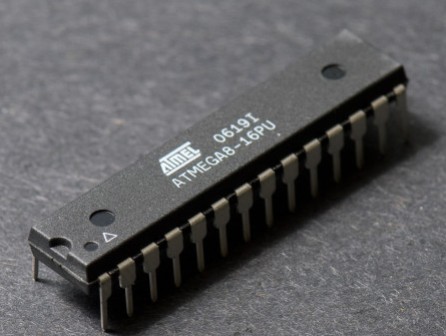
General information on the device of microcontrollers and main dates
Microcontrollers are an integral part of the life of a modern person. They are used from children's toys to process control systems. Thanks to the use of microcontrollers, engineers managed to achieve greater manufacturing speed and product quality in almost all areas of production.
This material is an overview of key dates in the history of microcontrollers. This is not a technical guide, many subtleties and points are missing.
Prerequisites for the emergence of microprocessor and microcontroller systems
To understand the reasons for the appearance and development of microprocessor technology, take a look at the characteristics and features of the first computers. ENIAC - the first computer, 1946. Weight - 30 tons, occupied the whole room or 85 cubic meters of volume in space. Large heat dissipation, power consumption, constant malfunctions due to electronic lamp connectors. Oxides led to the disappearance of contacts and the lamp lost contact with the board. Required ongoing maintenance.
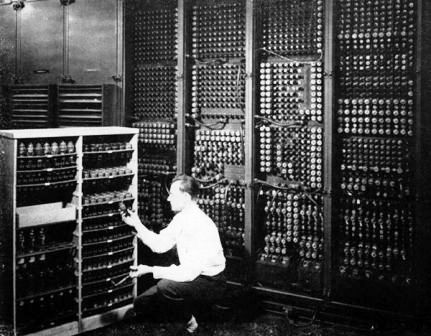
Computer technology developed and by the end of the 60s there were about 30 thousand in the world, including both universal computers and mini-computers. The mini ones of that time were the size of a closet.
By the way, in 1969 the prototype of the Internet - ARPANET (English Advanced Research Projects Agency Network) was already invented.
In parallel, semiconductor technologies developed - in 1907, work on detectors and electroluminescence of semiconductors. In the 1940s, diodes and transistors. This all led to the advent of integrated technology. Robert Neuss In 1959, he invented an integrated circuit (hereinafter referred to as IC or MS).
Important:
Intel - made a huge contribution to the development of microcontrollers. Founders: Robert Noyce, Gordon Moore and Andrew Grove. It was founded in 1968.
Until a certain time, the company produced memory devices. The first was the MS “3101” - 64 bits, Schottky - bipolar static RAM.
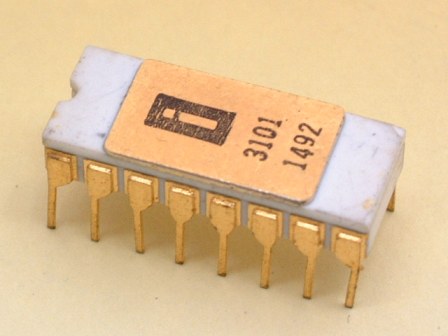
The next was the invention of the “4004” - a microprocessor with 2300 p / p transistors in its composition, not worse in performance than ENIAC, but smaller than a palm. Those. the size of the 4004th microprocessor was many orders of magnitude smaller.
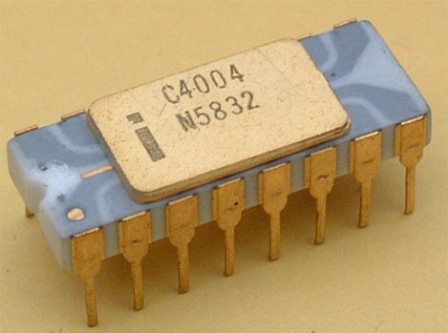
Architecture, programming, physical implementation
The architect of the first microprocessor became - Ted hoffcommand systems - Stan mazor. Federico Fagin - designed the crystal. But initially, Intel did not own all the rights to this chip, and, having paid $ 60,000 to Busicom, got full rights. Soon, the latter went bankrupt.
To popularize and introduce new technologies, Intel conducted both an advertising and an educational campaign.
Subsequently, other electronics manufacturers announced the creation of such devices.
It is interesting:
4004 - 4-bit, p-MOS chip.
The next step was the release of the 8008 processor in 1972. Unlike the previous model, it is more like modern models. 8008 - 8 bit, has a battery, 6 general purpose registers, a stack pointer, 8 address registers, I / O commands.

Event:
And in 1973, the most successful microprocessor configuration was invented, which is still classic - it is an 8-bit “8080”.

Six months later, Intel had a serious competitor - Motorola with the 6800 processor, n-MOS technology, a three-bus structure with a 16-bit address bus. A more powerful interrupt system, it needs enough voltage to supply it, and not three, like the "8080".In addition, the teams were simpler and shorter.
Until today, the confrontation between the families of microprocessors of these manufacturers remains.
Accelerated the speed and expanded the capabilities of microprocessors the introduction of 16-bit microprocessors. The first of these was Intel's 8086. It was used at IBM to create the first personal computers.
“68000” processor — 16 bit response from Motorola, used on ATARI and Apple computers
PCs have become popular for a wide audience ZX Spectrum. They installed processors "Z80", from Sinclair Research Ltd. One of the main reasons for its popularity is that you do not need to buy a monitor, because the Spectrum, like modern consoles, was connected to the TV, and a regular tape recorder as a device for recording and storing programs and data.

Micro-computers are the main step in the mass application of computer automation in the field of control. Since the main task in automation is the control and regulation of parameters, the term “controller” has become fixed in this environment.
After perestroika, active import of computer technology began, and the name “single-chip micro-computers” was supplanted by the word “Microcontroller” (for more details on how the microcontroller differs from the microprocessor, see here - Purpose and arrangement of microcontrollers).
And the first patent in the USSR for single-chip micro-computers was issued in 1971 to M. Kochren and G. Boone, from Texas Instruments. Since then, in addition to the processor, silicon and additional devices were also placed on the silicon crystal.
The end of the seventies is a new wave of competition between Intel and Motorola. The reason for this was two presentations, namely in 76 Intel released the i8048, and Motorola, only 78 - the mc6801, which was compatible with the earlier mc6800 microprocessor.
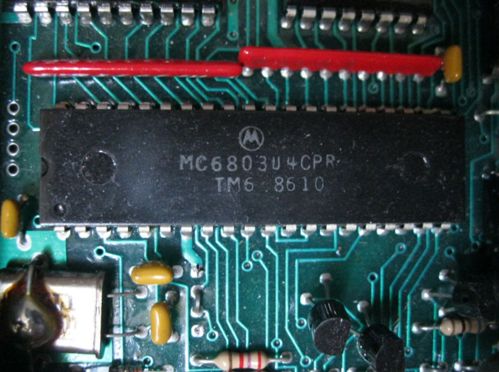
After 4 years, by the year 80, Intel releases popular and still MK i8051. It was the birth of a huge family that lives to this day. The world's leading manufacturers produce highly modified microcontrollers on this architecture for a wide range of tasks.
For its time, it had unthinkable 128,000 transistors. This was four times the amount in the i8086 processor.
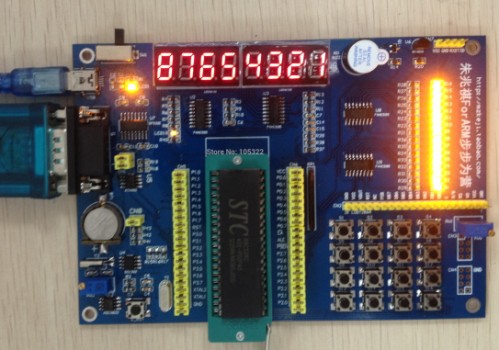
In 2017 and the last decade, the following types of microcontrollers are most common:
-
8-bit PIC microcontrollers from Microchip Technology and AVR from Atmel;
-
16-bit TI MSP430;
-
32-bit microcontrollers, ARM architecture. It is sold by developers to various companies, on the basis of which a lot of different products are produced.
In the Soviet Union, technology did not stand still. Scientists not only copied the most successful and interesting foreign developments, but also engaged in the development of unique projects. Thus, by 1979, the K1801BE1 was developed at the Research Institute of TT, this microarchitecture was called "Electronics of the SC" and had 16 bits.
See also: Types and arrangement of AVR microcontrollers
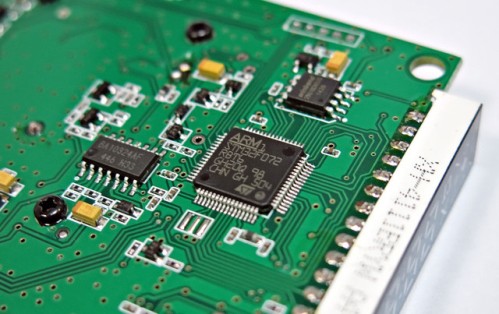
Microcontrollers can be divided according to the following criteria:
-
Capacity;
-
Command system;
-
Memory architecture.
Bit depth is the length of one word processed by the controller or processor, the larger it is, the faster the microcontroller can process large amounts of data, but this approach is not always true, individual requirements are put forward for each task, both in speed and in the processing method, for example, the use of a 32-bit ARM microprocessor to work in simple devices that operate with 8 bit words may not be justified both by the convenience of writing a program and processing information, and the cost itself.
However, according to statistics for 2017, the cost of such controllers is actively reduced, and if this continues to continue, it will be cheaper than the simplest PIC controllers, if there is a much larger set of functions. Only one thing is not clear - this is a marketing move and an understatement of prices, or real technological progress.
The division occurs at:
-
8-bit
-
16-bit
-
32-bit
-
64-bit
Division by type of command system:
-
RISC architecture, or abbreviated command system. It is focused on the quick execution of basic commands in 1, less often 2 machine cycles, and also has a large number of universal registers, and a longer way to access permanent memory. Architectural for UNIX systems;
-
CISC architecture, or a complete system of instructions, characterized by direct work with memory, a larger number of commands, a small number of registers (oriented to work with memory), the duration of instructions from 1 to 4 machine cycles. An example is Intel processors.
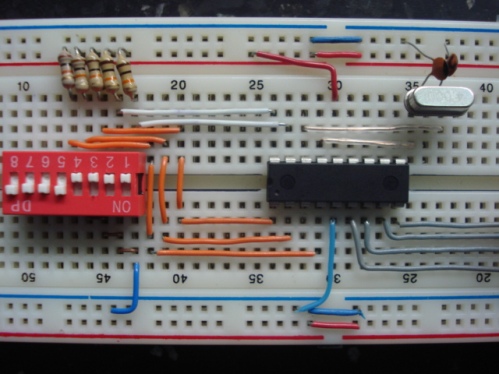
Division by type of memory:
-
Von Neumann Architecture - the main feature is the common memory area for commands and data, when working with such an architecture as a result of a programmer error, data can be written to the program memory area and further program execution will become impossible. Data transfer and command fetching cannot be carried out simultaneously for the same reasons. Designed in 1945.
-
Harvard architecture - separate data memory and program memory, used in the first on Mark family computers. Designed in 1944.
conclusions
As a result of the introduction of microprocessor systems, the size of the devices decreased, and the functionality increased. The choice of architecture, bit depth, command system, memory structure - affects the final cost of the device, since with a single production the difference in price may not be significant, but with replication it can be more than tangible.
EBook -Beginner's Guide to AVR Microcontrollers
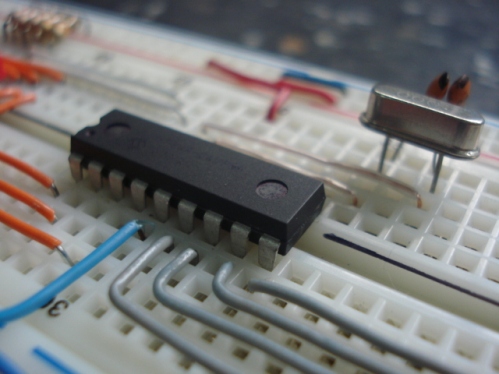
Step-by-step instruction in programming and creating devices on AVR microcontrollers
For electronic engineers specializing in the design of microcontroller devices, the term "quick start"". It refers to the case when it is necessary to test in a short time microcontroller and make him perform the simplest tasks.
The goal is to master the programming technology and get a concrete result quickly without going into details. Full presentation, skills and abilities will appear later in the process.
To learn how to work with microcontrollers in the "quick start" mode, to learn how to program them and create various useful smart electronic devices can be easily done using training video courses in which all the main points are laid out on the shelves.
The methodology for a quick study of the principles of working with microcontrollers is based on the fact that it is enough to master the basic microcircuit in order to then confidently compile programs for its other varieties. Thanks to this, the first experiments on programming microcontrollers pass without much difficulty. Having obtained basic knowledge, you can begin to develop your own designs.
At the moment, Maxim Selivanov has 4 courses on creating devices on microcontrollers, built on the principle from simple to complex.

1. Microcontroller programming for beginners
The course is for those who are already familiar with the basics of electronics and programming, who know basic electronic components, assemble simple circuits, know how to hold a soldering iron and want to go to a whole new level, but constantly postpone this transition due to difficulties in mastering new material.
The course is perfect for those who have just recently made their first attempts to learn microcontroller programming, but are ready to give up everything because it doesn’t work or works, but not as it needs to (is it familiar ?!).
The course will be useful to those who already collect simple (or maybe not so) circuits on microcontrollers, but have a poor understanding of the essence of how the microcontroller works and how it interacts with external devices.
2. Programming microcontrollers in language C
The course is dedicated to teaching the programming of microcontrollers in C language. A distinctive feature of the course is the study of the language at a very deep level. Training takes place on the example of AVR microcontrollers.But, in principle, it is suitable for those who use other microcontrollers.
The course is designed for a trained listener. That is, the course does not cover the basic foundations of computer science and electronics and microcontrollers. But, in order to master the course, you will need minimal knowledge on programming AVR microcontrollers in any language. Electronics knowledge is desirable, but not required.
The course is ideal for those who have just started to study programming AVR microcontrollers in C language and want to deepen their knowledge. Well suited for those who know how to program microcontrollers in other languages. And also suitable for ordinary programmers who want to deepen their knowledge of the C language.
3. Creating devices on microcontrollers in language C
This course is for those who do not want to limit their development to simple or ready-made examples. The course is perfect for those who need to create interesting devices with a full understanding of how they work. The course is well suited for those who are already familiar with programming microcontrollers in C and those who have been programming them for a long time.
The course material is primarily focused on the practice of use. The following topics are considered: radio frequency identification, sound reproduction, wireless data exchange, work with color TFT displays, touch screen, work with the FAT SD card file system.
4.Programming NEXTION displays
NEXTION displays are programmable displays with a touchscreen and UART to create a variety of interfaces on the screen. For programming, a very convenient and simple development environment is used, which allows you to create even very complex interfaces for various electronics in just a couple of evenings! And all the commands are transmitted via the UART interface to the microcontroller or computer. The course material is compiled from simple to complex.
This course is designed for those who have at least a little experience in programming microcontrollers or arduino. The course is perfect for those who have already tried to study displaysNextion. You will learn a lot of new information from the course, even if you think you have studied the display well!
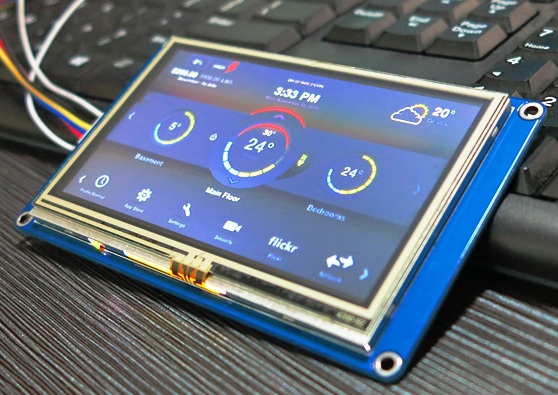
See also at electro-en.tomathouse.com:

